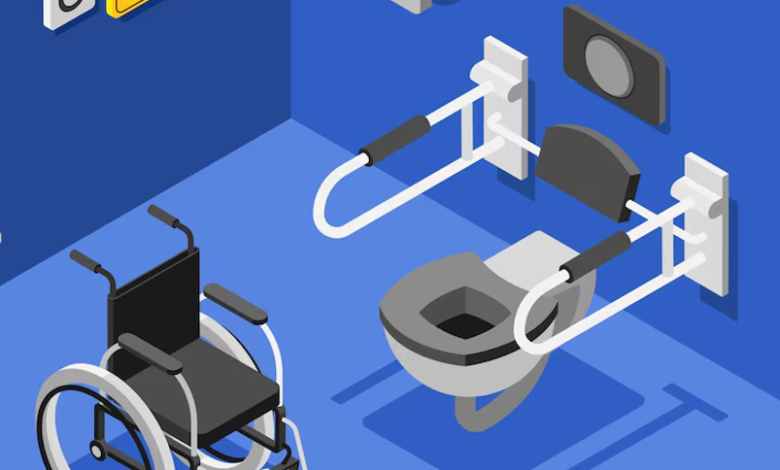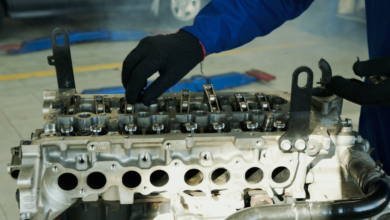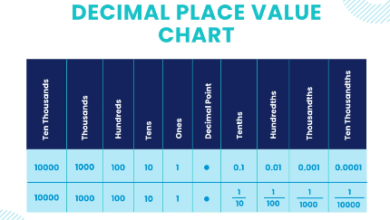Handicap Porta Potty Requirements: What You Need to Know

Accessibility is something most people do not consider until they need it. You order standard porta potties to your construction site or for an upcoming outdoor event, cross that item off your list, and forget about it.
But this is what occurs next. A wheelchair or mobility aid user appears and you find yourself in a situation where you did not plan enough for the right handicap porta potty. You are now rushing to correct a situation that would have been prevented.
The Real Problem with Regular Units
Standard portable toilets aren’t just inconvenient for people with disabilities – they’re basically unusable. The doors are too narrow. There’s nowhere to turn a wheelchair around inside. The toilet height is wrong.
I’ve seen event organizers panic when they realize their mistake. One wedding planner told me about a guest who couldn’t use any of the facilities they’d rented. The family had to drive 20 minutes to locate a restaurant that was accessible so that their grandmother could use a decent bathroom.
You do not want that kind of story to be associated with your event.
What Actually Makes a Unit Accessible
The door width needs to be 32 inches minimum. Sounds simple, but many so-called “accessible” units still come up short on this basic requirement.
Inside, you need 60 inches of turning space. That’s not negotiable if someone needs to maneuver a wheelchair. The toilet height matters too – between 17 and 19 inches from the floor works for most mobility aids.
Grab bars go on both sides. They need to support real weight and be positioned where people can actually use them. Some cheaper units have grab bars that are basically decorative.
The entrance should be level or have a gentle ramp. Those high steps on regular porta potties become impossible barriers for anyone with mobility challenges.
Ontario’s Legal Requirements
The Accessibility for Ontarians with Disabilities Act doesn’t mess around. If you’re serving the public, you need to provide accessible facilities.
Construction sites with 20 or more workers must have accessible units. Events over 100 people should plan for them too, though the exact requirements vary.
The fines start in the hundreds but can reach thousands. More importantly, human rights complaints can drag on for years and cost way more than just renting the right equipment from the start.
See also: Building a Home Office: Essential Tech Tools for Remote Work
Construction Site Reality
Job sites are tough environments. Even if you rent an accessible unit, placement becomes critical. Mud, gravel, and uneven ground can make the best equipment useless.
You need stable, level ground. Sometimes that means creating a platform or temporary ramp system. It’s extra work, but try explaining to an inspector why your accessible facility isn’t actually accessible.
Injuries to workers occur. A person may require temporary accommodation following an accident. It is always better to have the right facilities in place than to rush to put them in place.
Event Planning Gets Complicated
Outdoor weddings are particularly tricky. Guests dress up, which makes navigation harder. Someone in heels using a walker needs more stability than usual.
Weather makes everything worse. Rain creates slip hazards around entrances. Wind can make doors difficult to manage for people with limited strength.
Intelligent planners will reserve available units even when their guest list does not obviously need them. It is impossible to predict who will require accommodation and last-minute changes are costly and stressful.
Different Types Available
Basic accessible units meet minimum standards but feel cramped and institutional. Luxury trailer options provide full-size bathrooms with proper lighting and ventilation.
Some include changing tables at accessible heights. Others have enhanced features like automatic doors or hands-free fixtures. The price difference isn’t huge, but the user experience gap is significant.
Think about your audience. A corporate event might warrant luxury features, while a construction site needs durability over aesthetics.
Getting Placement Right
Location matters more for accessible units than standard ones. You need clear pathways from parking areas and main event spaces. A perfectly compliant unit becomes worthless if people can’t safely reach it.
Consider the approach route carefully. Grass can be challenging for wheelchairs, especially if it’s soft or wet. Gravel is often worse. Paved or firm surfaces work best.
Distance matters too. Place accessible units closer to main activities since users might need more time to reach facilities.
Maintenance Challenges
Accessible units need more frequent cleaning. The larger space means more surfaces, but it also means problems affect usability more seriously.
Grab bars require special attention. They get heavy use and must stay clean and slip-resistant. Some cleaning products can make metal surfaces slippery, which defeats the safety purpose.
Plan your service schedule based on usage patterns. Multi-day events definitely need mid-event cleaning, especially for accessible units.
Budget Considerations
Accessible porta potties cost 20-30% more than standard units. That seems steep until you consider the alternatives – fines, complaints, or excluding potential customers.
Site preparation adds costs if you need platforms or ramps. Still, these expenses pale compared to legal issues or reputation damage from accessibility failures.
Planning Ahead
Do not leave it to the last minute. The demand and supply of accessible units are high and low in the peak seasons. Rental companies that are popular are booked weeks or months before.
Collaborate with suppliers that are knowledgeable about compliance. Ask questions regarding measurements and features. Certain companies sell so-called accessible units that are not really up to the current standards.
Obtain records of the unit specifications. In case compliance is a problem in the future, you will have to have evidence that you have ordered the right equipment.
Making It Work
Accessibility is not only about compliance. It is about making spaces where all people can feel free to participate.
Problems are avoided by good planning. Poor planning causes costly headaches and leaves out individuals who should have equal access to facilities.
It is important to note that septic pumping schedules and portable toilet servicing must be coordinated when designing accessible facilities to support long-term construction projects or extended events.
The bottom line? Get the requirements correct at the beginning and everybody wins.





